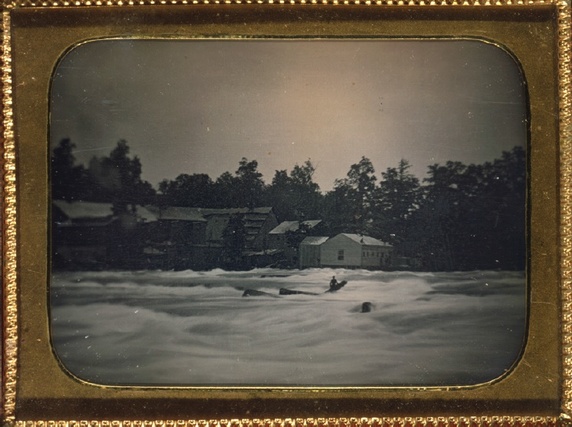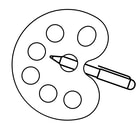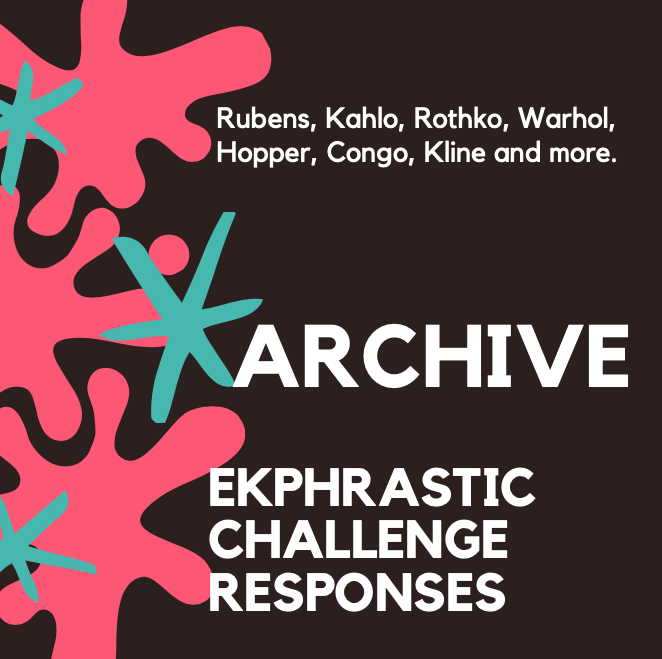|
Platt
All night long they heard in the houses beside the shore, Heard, or seemed to hear, through the multitudinous roar, Out of the hell of the rapids as 'twere a lost soul's cries,-- Heard and could not believe; and the morning mocked their eyes, Showing, where wildest and fiercest the waters leaped up and ran Raving round him and past, the visage of a man Clinging, or seeming to cling, to the trunk of a tree that, caught Fast in the rocks below, scarce out of the surges raught. Was it a life, could it be, to yon slender hope that clung? Shrill, above all the tumult the answering terror rung. --William Dean Howells, "Avery" Nothing else I could do. It’s my profession after all. Photographing Niagara Falls. Its views. Its visitors. And selling the resulting daguerreotypes. Quite successfully. Because I’m a damn good daguerreotypist. Ask anyone around here. And I’m on duty every day, 365 days a year. This day, July 16, 1853, I was waiting for tourists along the American Channel rapids when I saw three men struggling to maneuver their row boat to shore. They had been working on the big dredging scow anchored in the river. Their oars were broken. Or lost. I turned my lens toward them just as the boat capsized and I saw two bodies cartwheeling over the edge of the American Falls too fast for me to capture them in my camera. There was no sign of the third man — turned out to be a local fellow named Samuel Avery — until he leapt up like a fucking phoenix and sat astride a log cantilevered in a rocky shoal in the middle of the river. The rapids were way too loud for him to hear my hallo, so I waved at him with both arms, but he was likely too afraid to let go of the log to answer. He was riding the river like a scared girl on a runaway stallion, but luckily he kept still enough for me to create an historic photograph. Took an even longer time till someone thought to hitch a lifeboat to the Bath Island Bridge and send the boat down toward the man. Avery caught and climbed into the boat, but before I could refocus, the rapids turned the lifeboat upside down, and Avery, thrown back into the river, met his fate just as his friends had hours before. Nothing else I could do. I returned to my hotel where I processed the plate and encased a dozen of the images for sale at my Point View stand. They sold well. They still do. James Penha A native New Yorker, James Penha has lived for the past quarter-century in Indonesia. He has been nominated for Pushcart Prizes in fiction and in poetry. Snakes and Angels, a collection of his adaptations of classic Indonesian folk tales, won the 2009 Cervena Barva Press fiction chapbook contest; No Bones to Carry, a volume of his poetry, earned the 2007 New Sins Press Editors' Choice Award. Penha edits TheNewVerseNews, an online journal of current-events poetry. @JamesPenha www.jamespenha.com Sources: "Getting around." Luminous-Lint. Web. 15 Oct. 2015. "Niagara River - Life & Death on the River: Accidents & Rescues." 20 Feb. 2012. Web. 15 Oct. 2015. <http://www.niagarafrontier.com/accident.html>. "Platt D. Babbitt (Getty Museum)." The J. Paul Getty in Los Angeles. Web. 15 Oct. 2015. <http://www.getty.edu/art/collection/artists/2800/platt-d-babbitt-american-1823-1879/>. Weld, Charles Richard. A Vacation Tour in the United States and Canada. London: Longman, Brown, Green, and Longmans, 1855. Print.
1 Comment
Mary McCarthy
3/28/2016 09:05:34 am
I've always wondered about the photographers' thinking when they're recording horrific events, accidents, etc. Why record instead of act--isn't this a moral question? The speaker is this piece obviously feels he needs some excuse--"Nothing else I could do." But doesn't hesitate to profit from the pain he has recorded. Certainly callous, at the very least! Very interesting!
Reply
Your comment will be posted after it is approved.
Leave a Reply. |
The Ekphrastic Review
COOKIES/PRIVACY
This site uses cookies to deliver your best navigation experience this time and next. Continuing here means you consent to cookies. Thank you. Join us on Facebook:
Tickled Pink Contest
April 2024
|




